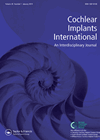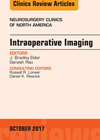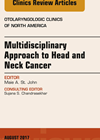
Journal Reviews
X-ray vs. intraoperative testing for determining cochlear implant placement
Most cochlear implant centres confirm electrode position after surgery using X-rays to ensure optimal electrode placement. As well as transorbital view X-rays, this team check placement using impedance measures and neural response telemetry (NRT) performed intraoperatively. The former indicates whether...
Intraoperative MRI use during pituitary tumour resection
This article provides an overview of intraoperative MRI (iMRI) use in transphenoidal surgery (TSS) for pituitary tumours. Traditionally imaging of the surgical field during surgery involves intraoperative fluoroscopic imaging or neuronavigation which help to avoid injury to critical structures but...
Advances in surgical innovation for head and neck cancer
This article reviews current advances in surgical treatment of head and neck cancers such as sentinel node biopsy, stereolithic modelling, transoral robotic surgery and intra-operative imaging of tumour margins. Sentinel node biopsy has been found to be especially useful for...
Scoring system to predict hearing impairment following hemifacial spasm surgical treatment
The authors analysed brain stem auditory evoked potentials prospectively in 100 patients undergoing endoscopic microvascular decompression for management of hemifacial spasm over a period of two years. They then developed a scoring system based on electrophysiological events to predict the...
Power tools dance off
The use of the harmonic scalpel is popular with some head and neck surgeons. This study looked at selective neck dissections for 40 patients with oral cavity carcinoma. They were randomised into harmonic scalpel (HS) use and monopolar electrocautery. The...










